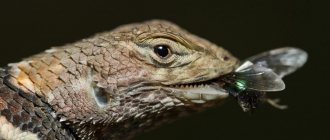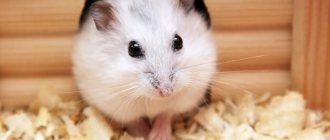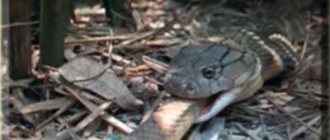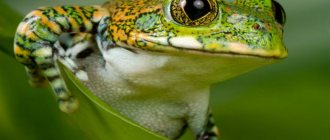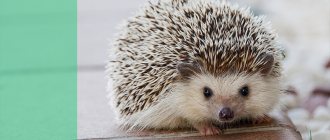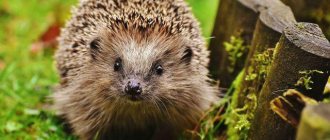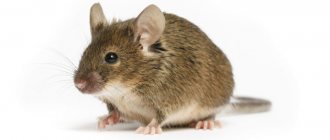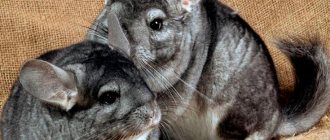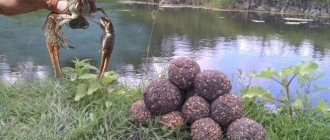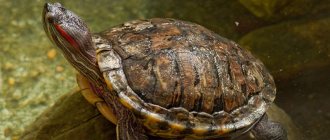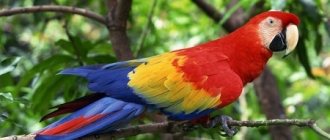Mice are rodents that live both in the wild and at home. They feed mainly on plant foods, although they will not refuse some food of animal origin. The diet of mice living in captivity should be as close as possible to the diet in natural conditions. However, the menu of rodents living in the wild depends on several factors: areola, time of year, type of mouse (forest, meadow, steppe, etc.).
Key features of diet in the wild
The diet of rodents depends on their habitat and season. For food, they choose foods high in carbohydrates. For example, fruits, grains, seeds. It is worth noting that mice are able to eat small portions for a long time when food is scarce. However, in special cases, hunger forces them to engage in cannibalism by eating their young.
Newborn mice feed on their mother's milk. This continues until they are able to chew solid food on their own. The mother brings food to the nest for stronger cubs, accustoming them to her diet. Mature mice begin to get their own food.
Wild rodents living in the city are omnivores. They eat both plant and animal foods. Mice are not averse to eating worms, snails, crickets and slugs. Also in urban environments, rodents feed on waste thrown away by people.
Rodents eat at least their body weight per day. The amount of food pregnant and lactating individuals eat increases. The peculiarity of the diet of all mice is that they do not eat the entire product, but gnaw it from the top.
Who eats mice
Voles are common on almost all continents, as well as the islands of the Northern Hemisphere. Most rodents inhabit regions with a temperate climate and open landscapes. Such places are rich in food: tubers and shoots of plants, grain crops, insects.
Due to their high fertility, mammals reproduce rapidly; in 1 year the population increases by several dozen times. The wide distribution of rodents makes them available food for predatory animals and birds.
Animals
In nature, mice feed on weasels, foxes, and martens, for which rodents are the main food. A ferret can eat up to 12 rodents per day. Weasels, which have a narrow, long body, often climb into holes and destroy mouse pups. If there is no large prey, mammals become food for arctic foxes, lynxes, wolves, and mongooses.
Voles are the favorite and, in winter, the only food of foxes. In cold weather, the size of the population of these animals directly depends on the number of mice eaten.
The natural enemies of wild mice are domestic and forest cats. For hedgehogs, voles are not daily food, since the animals are simply not able to catch them. But if a mouse gets in the way of a hedgehog, it will be eaten.
Birds
Another terrible enemy of rodents is birds of prey. One owl or owl can destroy about 1,200 individuals in a year. The special structure of the digestive system allows owls to eat voles completely, with hair and bones. Birds hunt at night and use the animals to feed their chicks. Sometimes mice become food for a shrike or raven.
Snakes, lizards
Mice become an important element of nutrition for snakes and vipers. They go hunting at night, catch voles, swallow them completely, and then digest them. Vipers often settle in underground burrows dug by rodents.
Some large lizards are not averse to eating mice.
Plants
For wild animals living in the tropics, there is another danger - the insectivorous plant Nepenthes spathulata. It is found on the islands of Sumatra and Java. The flower reaches 5 m in length and is considered a predator that lures small animals with its scent, swallows it, and then completely digests it with the help of digestive enzymes.
In appearance, the plant resembles water lilies hanging in a row on a stem. The inner surface of the flowers is smooth and slippery and emits a sweet smell that is attractive to animals. Mice and insects, getting inside, slide down the edge to the very bottom, then are digested over the course of several days.
Types of mice and their food preferences
There are several types of mice in nature. Each of them has a slightly different diet. For example, the menu of steppe rodents is dominated by cereals and larvae of small insects, while that of meadow rodents is dominated by grasses, berries and root crops. Forest mice prefer mushrooms, acorns and tree bark. Rodents that live near bodies of water eat mainly spiders, caterpillars and plant roots. Another type of mouse is the taiga mouse. The basis of their diet is lingonberries and cranberries.
Mouse - description and external characteristics
These small rodents are distributed throughout the entire earth, excluding the extreme northern and high-mountain regions. The closest relatives of mice are jerboas, mole rats, hamsters and dormice. And more distantly related are rats, chinchillas, porcupines, beavers, and guinea pigs. In total, the Mouse subfamily includes 121 genera and more than 300 species.
The mouse is a small animal with an elongated and pointed muzzle, large round ears and bulging beady eyes. A long, hairless or slightly furred tail is a distinctive feature of the animal. The limbs, which are not the same in length, are adapted for digging and moving along vertical and horizontal surfaces. The body length of a rodent can vary from 3 to 20 cm, weight - from 15 to 50 g.
Mice have a special bite. On the lower and upper jaws the animal has 2 chisel-shaped teeth, which are continuously growing. Rodents are forced to constantly grind them down, which is why their incisors are very sharp.
Animals from the Mouse family have good eyesight and can distinguish between red and yellow shades. The usual body temperature of these rodents ranges from 37.5 to 39⁰C. The maximum lifespan of mice is 4 years.
Diet of rodents at different times of the year
Under natural conditions, the diet of mice is determined by the time of year:
- In summer and spring, rodents eat plant foods.
- In autumn, mice prefer ripe fruits of fruit trees. Their diet also includes a lot of grains and seeds that remain in the ground after harvest.
- In winter, it is quite difficult for the animal to get food. In search of food, he gets closer to inhabited areas of land, destroying people's supplies. Mice choose carrots, potatoes, and beets as food.
In the wild, rodents consume little water. They get most of it from food. That is why rodents most often choose juicy fruits, vegetables and fleshy plant leaves.
Mice for keeping at home
Thanks to modern selection, ornamental mice have hundreds of species, among which there are singing, “waltzing”, and animals with unusual coat colors (white albino mice, pure black mice, ashy and cream-colored animals).
Some types of mice are especially popular:
- The Japanese dwarf mouse is very tiny, up to 5 cm long. The white skin is decorated with black and brown spots. Friendly, clean and energetic. Leads a nocturnal lifestyle. There are 5-7 mice in a litter.
- The spiny mouse or akomis is a large decorative mouse with many needles located along the entire back. The color is reddish-brown or blackish-red. The neck is framed by a voluminous fat hump. The nose is elongated, the eyes are bulging, the ears are large and oval in shape. The mouse is very active and quickly gets used to people.
- The decorative African striped mouse has an interesting coloring: light and dark stripes alternate along the body. The animal does not emit an unpleasant odor. It climbs well on vertical surfaces. The striped mouse is a very shy animal. In case of danger, it can pretend to be dead or jump to a height of up to 2.5 m. The body length rarely exceeds 10 cm.
Eating at home
Mouse breeders know firsthand how important a balanced and proper diet is for a rodent. Not only the pet’s health, but also its appearance depends on it. The menu for mice at home should be as close as possible to how the animal eats in the wild.
The easiest way to provide your mouse with the right diet is ready-made food. You can buy it at any pet store. When choosing industrially produced food, you should pay attention to its composition. It should not contain husks, coarse herbs, chemical additives, or dyes.
You should not give your rodent food that contains predominantly peanuts, oats, cumin, or sunflower seeds. These products contain a large amount of fat, which will cause obesity.
How to choose bait for a trap
Rodent control is carried out using bait. Many people believe that cheese is the animal’s favorite product. But that's not true.
The article at the link has some interesting information about the misconception about cheese.
The most effective pieces will be:
- apples or pears;
Mice are lovers of harmful smoked foods.
- apricot or peach;
- drain;
- fresh bread soaked in sunflower oil;
- freshly smoked or salted lard.
Boiled porridge and sunflower seeds are also suitable. With the help of any of the listed products, the animals will very quickly fall into a trap.
Natural diet
Mice have a fairly fast metabolism. Every 3 hours the rodent needs food. Based on this, you should regularly feed him fresh food. If this is not done in a timely manner, the animal may develop health problems.
A mouse living at home should receive 14% protein, 9% fiber and 10% fat daily. When compiling a diet, it is necessary to take into account the natural needs of the rodent’s body. The menu should include the following food:
- vegetables (cucumbers, zucchini, carrots, etc.);
- fruits (apple, banana, grapes, melon);
- grain (barley, wheat, rye);
- nuts (walnuts, hazelnuts, etc.);
- greens (parsley, sprouted grains, dill);
- berries (strawberries, currants, wild strawberries);
- quail egg,
- seeds.
Captive mice are often deficient in protein. To replenish it, you should include dried freshwater crustaceans, boiled quail eggs, and insects in your diet. If there is a lack of calcium and amino acids in the mouse’s body, it is recommended to add canned crickets to the menu.
We should not forget about the young twigs that the rodent needs to grind down its teeth. The mouse will not refuse rowan, apple and pine branches. It is also necessary to provide your pet with access to clean and fresh water.
As a treat, you can treat your pet with black bread and dried fruits. Everyone knows that mice love cheese. However, you should be extremely careful with this product, since its excessive consumption leads to obesity.
Please note that mice love cockroaches. If these insects are in the house, then rodents will hunt for them.
conclusions
The diet of mice in domestic and wild conditions is somewhat different, since the decorative species is fed for the most part with special food mixtures and various treats from the table, which the owners carefully treat the pet with.
Mice living in nature have to make do with what is around them. But both of them have extremely short life expectancies . Therefore, when keeping a pet mouse, it is necessary to adhere to a balanced diet, avoiding obesity and the resulting health problems.
What should you not give to mice?
A mouse can chew anything that gets in its way. However, many products can cause irreparable harm to her health. To avoid this, you need to exclude the following foods from your diet:
- pickles;
- smoked products;
- salo;
- potato;
- sweets;
- feed intended for other animals;
- white cabbage;
- tomatoes;
- citrus;
- onion;
- milk.
The choice of herbs should be approached with special responsibility. It is forbidden to give the mouse medicinal herbs with a bitter taste: celandine, wormwood, gentian, etc.
The diet of mice living in the wild and at home is approximately the same. Rodents are quite unpretentious eaters, so they are quite easy to keep. The most unfavorable time for mice living in captivity is winter. At this time, it is difficult for the rodent to find food.
House mouse: choosing a pet
Decorative mice are friendly, non-aggressive, clean, quickly get used to their owners, and are very easy to care for. When choosing an animal, you should pay attention to the habits and appearance of the rodent. An animal in good health looks like this:
- the fur does not stick out, there are no bald patches;
- teeth white, straight;
- the animal has moist and shiny eyes;
- the animal does not have mucous discharge from the nostrils and eyes;
- The mouse is actively moving and feeding.
We must not forget how many years mice live. The maximum lifespan of these animals is 3-4 years, so it is better to choose a pet under the age of 12 months. You need to pay attention to the sex of the rodent, since several males will not get along in one home.
Males are slightly larger than females, their body resembles an elongated pear. A 30-day-old male mouse has formed testicles under its tail. And in the female, from the 3rd day after birth, 5 pairs of rudimentary nipples are clearly visible.
The house mouse is a collective animal, so it is better to purchase several individuals. If further breeding of animals is planned, then males and females must be kept separately until mating.
Instinct prevented me from feeding
In the apartment, the mice were transplanted into a small transparent terrarium lined with cotton wool, covered with thick cloth and placed under a table lamp with an ordinary incandescent light bulb, which warmed them gently. In addition, I changed the mouse diet: I bought the “Malyutka” formula from birth and bred it. She continued to feed with a cotton swab.
Very quickly I realized that I couldn’t give them food every two hours, as expected, even if I wanted to: no one had yet canceled work and sleep. Therefore, I set the intervals between feedings at 4-5 hours: nine in the morning, one in the afternoon, five in the evening, nine in the evening, midnight and five in the morning.
Feeding, especially at five in the morning, when I got up on the alarm clock, was fun. It was necessary to dilute a teaspoon of the mixture in warm water, remove the mouse from the terrarium, fix it in your hand, dip a cotton swab in the mixture and let it lick. Instantly, the little mice had an instinct that made it incredibly difficult to feed them. Each one opened his mouth wide, threw back his head and began to shake it from side to side, while simultaneously making a “bicycle” with his tenacious front paws. Most likely, this was how they looked for their mother’s nipple, and with their paws they stimulated her milk production. I had to work really hard to get the cotton wool with the mixture into their mouths. It took 15 minutes to feed each mouse...
The influence of seasons on the nutrition of mice
The food and amount that mice consume depends greatly on what time of year it is. Small pests are extremely sensitive to this, so their diet changes with the weather.
- Spring. In spring, mice live their normal lives after frost. Sometimes they return to fields and meadows, unless, of course, it is extremely dangerous to be in people’s homes.
- Summer. During the hot summer, voles live in their natural habitat. They only occasionally raid the gardens of summer residents in search of tasty beets and carrots. In the warm season, they mainly feed on berries and plant stems.
- Autumn. One of the most favorable times for mice. The hay collection begins in the field, leaving a huge amount of grains on the arable land. Haystacks are excellent winter housing for mice. In the fall, many fruit trees ripen; sunflowers ripen towards the end of summer; mice will never refuse this.
- Winter. Mice never hibernate; on winter days and evenings they are no less active than in summer or autumn. And since they are hungry in winter, this forces them to run to people to replenish supplies that could suddenly run out.
Seasons also affect what mice eat
Peculiarities
Mice are small animals, the maximum body length of which (depending on the type of mouse) can reach up to 19 cm. These are very timid creatures, showing caution at every rustle and sound. Sensing danger, the animals quickly hide or start running. The language of communication for these small rodents is squeaking. They are able to live either alone or in a small family.
In autumn, the mouse tries to make supplies that it feeds on in winter. She lays them in nests that she makes from grass stems. Rodents also dig complex systems of underground passages and use abandoned holes to serve them as shelter.
What do mice eat? The animals have an excellent appetite. They love to feed on agricultural crops, which causes damage to the crop. But getting rid of rodents is not easy, since rodents reproduce very quickly: a female can give birth to up to 10 mice at a time. During the year, each female gives birth to 3-4 offspring. And given the fact that animals become sexually mature after 70-80 days and the female’s pregnancy lasts no more than 25 days, it becomes clear that mouse populations are replenished quite quickly.
On a note!
Under natural conditions, the animals live 9-10 months. The life expectancy of mice in captivity is much higher (up to 7-8 years).
Habitat of a small rodent
The distribution range of mice in natural conditions covers most climatic zones, continents and zones. Representatives of the family can be seen in deciduous and coniferous forests, in tropical thickets, in deserts and steppes, in swampy areas or on mountain slopes. But the most comfortable habitat is human dwellings.
Mice often make nests using grass stems, settle in burrows abandoned by other animals, or dig complex communications under the thickness of the earth. Mountain, forest and steppe varieties of rodents, unlike swamp ones, float rather poorly on water.
Eating near human habitation
In search of affordable food, mice very often move to live closer to human habitation, because here they can find a lot of leftover food without extra effort. A vole that lives near a person’s house eats and steals everything when night falls in search of something edible:
- food left over after dinner;
- cereals stored in kitchen cabinets;
- potatoes and other root vegetables stored in the cellar;
- remains of vegetables, berries and fruits, green parts of plants;
- seedlings intended for the garden, etc.;
- Rodents living near the apiary often eat honey and beebread, which causes beekeepers a lot of trouble.
Mice living in a house or apartment are usually omnivores and feed on everything they can find in the kitchen, on the table, in the pantry or trash can.
Interesting!
Many children and adults, after watching cartoons, think that the favorite food of mice is cheese. In fact, this is not at all true: rodents will consume dairy products only in a situation where there is nothing else on the menu. Mice do not like cheese, and in large quantities this product can cause obesity and liver problems.
Feeding mice in a person's home

